151 events in 2022
-
Seminar
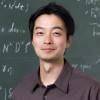
Magnetic fields at extragalactic scales: origin from the early universe?
October 7 (Fri) at 14:00 - 15:00, 2022
Ryo Namba (Senior Research Scientist, RIKEN Interdisciplinary Theoretical and Mathematical Sciences Program (iTHEMS))
Blazar observations have provided tantalizing evidence for the presence of magnetic fields in the extragalactic regions, where astrophysical processes may not be an efficient source for their generation. While a natural speculation is to associate the production of such large-scale magnetic fields to inflationary physics, it has been known that magnetogenesis solely from inflation is quite challenging. In this talk I will discuss some mechanisms, successful/unsuccessful, for production of magnetic fields in the primordial universe, as well as the constraints from theoretical consistencies and observational data.
Venue: via Zoom
Event Official Language: English
-
Seminar
Extremely low-coverage whole genome sequencing (XLC-WGS) as a cost-effective tool for pharmacogenomic profiling: Advantages and Challenges
October 6 (Thu) at 10:00 - 11:00, 2022
Lazaro-Guevara Jose Miguel (Postdoctoral Researcher, Department of Botany, The University of British Columbia, Canada)
Despite more than 10 years have passed since the first FDA labeling for pharmacogenomics (PGx), factors like the continuous updates on PGx related SNVs and the high cost for PGx testing have challenged its clinical implementation. However, next generation sequencing technologies like extremely low coverage whole genome sequencing (XLC-WGS) could overcome these difficulties. Our purpose is to explore the potential use of XLC-WGS as a cost-effective way for generate reliable PGx profiles that can be applied in preemptive and clinical scenarios. We sequenced 195 patients enrolled to the Utah Diabetes and Diabetic Complications Study using XLC-WGS, for further PGx Profiles generation. Additionally, we sequenced a subset of 190 individuals using Illumina CoreExome-24 v1.3 microarray and 50 individuals using Deep Coverage Whole Genome Sequencing (DC-WGS) for cross-platform comparisons. We built the Pharmacogenomic profiles extracting the genetic information from XLC-WGS in accordance to the extended manifest of the commercially available PGx microarray PharmacoScan. Once the PGx profiles were generated we perform a preemptive analysis using the Clinical Pharmacogenetics Implementation Consortium (CPIC®) Gene-Drugs interaction with “A” level. The cross-platform comparison revealed that genetic concordance between XLC-WGS, DC-WGS and Microarray platforms ranged from 98.25% to 99.7%. The preemptive PGx profiles identified patients at risk of potential adverse effects for intake of commonly prescribed medications, including 4 homozygote carriers of rs4149056 (in SLCO1B1) which has previously been associated with statin-related myopathy. As well as 25 homozygote carriers of rs9923231 (in VKORC1) that increased risk of Hemorrhage when starting Warfarin intake without dose adjustment/reduction.
Venue: via Zoom
Event Official Language: English
-
Seminar
Transport coefficients of a Bose gas in one dimension
October 5 (Wed) at 13:30 - 15:00, 2022
Yusuke Nishida (Associate Professor, Department of Physics, Tokyo Institute of Technology)
I will present two of our recent studies on transport coefficients of a Bose gas in one dimension. The first part is on the thermal conductivity [1], which is typically divergent for quantum integrable systems in one dimension. However, it is found to be finite and dominated by an effective three-body interaction that inevitably arises by confining bosons into a tight matter waveguide. The second part is on the bulk viscosity [2], which is computed perturbatively in the high-temperature, weak-coupling, and strong-coupling limits. In particular, the strong-coupling limit is accessible thanks to the Bose-Fermi duality, which is shown for the dynamic bulk viscosity provided by the contact-contact response function.
Venue: via Zoom
Event Official Language: English
-
Workshop
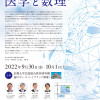
The 3rd "Medicine and Mathematics" Workshop Organized by KUIAS, iTHEMS and Heidelberg Univ.
September 30 (Fri) - October 1 (Sat), 2022
We will have the 3rd workshop organized by KUIAS, iTHEMS and Heidelberg Univ. on "Medicine and Math" in Kyoto (hybrid style) on Sep.30-Oct.1, 2022. Please join if you are interested in this interdisciplinary subject. Most of the talks are in Japanese except for session 3. For more information and registration, please visit the related links. Co-organized by: Center for Integrative Medicine and Physics, Kyoto University Institute for Advanced Study (KUIAS) RIKEN Interdisciplinary Theoretical and Mathematical Sciences Program (iTHEMS) Center for Science Adventure and Collaborative Research Advancement (SACRA), Kyoto University
Venue: Maskawa Hall, 1F, Maskawa Building for Education and Research / via Zoom
-
Seminar
Axion electrodynamics in neutron stars
September 27 (Tue) at 14:00 - 15:00, 2022
Filippo Anzuini (Postdoc Fellow, Department of Astronomy, Monash University, Australia)
Axions are pseudo-Goldstone bosons that provide a solution to the strong CP problem, and are prominent candidates for dark matter. In neutron stars, it has been shown recently that the potential of the QCD axion acquires finite density corrections that shift the axion field expectation value, which can be large compared to the vanishing expectation value in vacuo. Such a shift leaves an imprint on typical neutron star observables such as the redshifted thermal luminosity, which can be used to constrain the axion parameter space. In this talk we focus on the coupling of axions with photons, which modifies Maxwell’s equations and alters the neutron star magnetic field. By performing state-of-the-art magneto-thermal simulations, we calculate the axion-induced perturbations to the neutron star’ magnetic field, and show that they grow on relatively short time-scales. At the same time, intense electric currents form, leading to enhanced ohmic dissipation, which increases the stars’ observable thermal luminosity. The activation of such mechanisms depends on the axion decay constant and the axion mass, two long-sought parameters at the center of several experimental and theoretical investigations. Both parameters can be constrained by comparing our simulations to observations of thermally-emitting neutron stars. The latter do not exhibit uncontrolled growth of the magnetic field that causes enhanced ohmic dissipation, allowing us to place bounds on axion parameters. Our results open a new astrophysical avenue to constrain axions, extending significantly the parameter range that can be probed with direct axion searches.
Venue: Hybrid Format (Common Room 246-248 and Zoom)
Event Official Language: English
-
Seminar
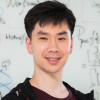
Discrete Stochastic Model for the Co-infection Dynamics with Defective Interfering Particles
September 26 (Mon) at 16:00 - 17:00, 2022
Jizhou Li (Postdoctoral Researcher, RIKEN Interdisciplinary Theoretical and Mathematical Sciences Program (iTHEMS))
Defective interfering particle (DIP) in the context of influenza A virus is a virion with a significantly shortened RNA segment substituting one of its eight full-length parent RNA segments, such that it is preferentially amplified during replications. Therefore, a cell co-infected by standard viruses (STVs) and DIPs will produce mainly DIPs, suppressing the STV yield and displaying nontrivial co-infection dynamics. An important approach to quantifying the co-infection dynamics is mathematical modeling with ordinary differential equations (ODEs), which treat relevant quantities (such as numbers of target cells, STVs, and DIPs) as continuous numbers evolving with prescribed physical laws. However, the ODE models are mean-field in nature that is only valid for scenarios with large numbers of STVs and DIPs. For small-number scenarios, the infection outcomes can be dominated by random fluctuations and stochasticity, which cannot be captured by ODE models. In this week’s biology seminar, we introduce a new Discrete Stochastic Model (DSM) aimed to rectify the shortcomings of the ODEs by treating the co-infection dynamics as stochastic processes. As we will show, the new DSM is consistent with the ODE model in the large number regime. In the low number regime, the DSM yields bi-modal distributions for the infection outcomes (extinct vs established infections) that are otherwise unattainable by ODE models.
Venue: via Zoom
Event Official Language: English
-
Seminar
Hyperons in neutron stars: fast cooling, Joule heating and hyperon superfluidity
September 26 (Mon) at 14:00 - 15:00, 2022
Filippo Anzuini (Postdoc Fellow, Department of Astronomy, Monash University, Australia)
Neutron stars challenge current models of highly dense matter. Despite be- ing the targets of numerous observational campaigns (e.g. gravitational-wave searches and X-ray observations), their equation of state is still unknown. One of the most exciting possibilities is that “unconventional” particles such as hy- perons may appear in neutron star cores. Hyperons have a major impact on the observed thermal luminosity, because they accelerate the cooling rate via direct Urca processes, which copiously increase the neutrino emission from the core. Such mechanism is often considered to be a key signature of hyperon concentrations at high densities. Hyperon superfluidity plays a major role as well, because it can suppress the neutrino emissivity exponentially. The hope is that a comparison of the theoretical cooling curves against the available data of thermally-emitting neutron star can hint towards the existence of hyperons and their superfluidity. There is one ingredient, however, that is often neglected in neutron star cooling models: internal heating. The magnetic field of neutron stars decays due to the dissipation of the electric currents circulating in the crust, generating substantial Joule heating in the shallower layers. The ther- mal power generated by this process can counterbalance hyperon fast cooling, making it difficult to infer the presence of hyperons from the available thermal luminosity data, and complicating the link between measured thermal emission and internal composition. We show that this is the case for magnetars, because their crustal temperature is almost independent of hyperon direct Urca cooling in the core, regardless of whether hyperons are superfluid or not. Likewise, ther- mal luminosity data of moderately magnetized neutron stars are not suitable to extract information about the internal composition, as long as hyperons are superfluid.
Venue: Hybrid Format (Common Room 246-248 and Zoom)
Event Official Language: English
-
Seminar
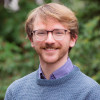
Genetic Drift and Gnatural Selection
September 22 (Thu) at 16:00 - 17:00, 2022
Thomas Hitchcock (Special Postdoctoral Researcher, RIKEN Interdisciplinary Theoretical and Mathematical Sciences Program (iTHEMS))
Understanding how the various evolutionary forces of mutation, selection, and drift collectively shape the genetic composition of populations is a key goal of population genetics research. One classic method of study has been to compare different inheritance systems, and particularly popular has been the within genome comparison of autosomes and sex chromosomes. However, inferences from such comparisons can be limited by the fact that multiple factors differ between sex chromosomes and autosomes (e.g. ploidy and transmission genetics). Here, we study a group of black winged fungus gnats with a peculiar type of reproduction “digenic PGE” in which X and autosomes are inherited equally from females and males, but the X remains expressed in a haploid state in males compared to a diploid state in females. I first explain what is known about their inheritance system, and then show how we can extend classic theory to the various inheritance systems that coexists within the fungus gnats.
Venue: via Zoom
Event Official Language: English
-
Seminar

MeV gamma-ray all sky simulation
September 16 (Fri) at 14:00 - 15:00, 2022
Naomi Tsuji (Assistant Professor, Faculty of Science, Kanagawa University)
The MeV gamma-ray domain is the only unexplored window among recent multiwavelength observations in astrophysics, often referred to as the "MeV gap". To fulfill this gap, there are several ongoing and planned projects of MeV gamma-ray telescopes. The measurement of MeV gamma rays (both continuum and line emission) would give us new insight into many topics in astrophysics, such as relativistic jets, particle acceleration, and origin of matter. In advance of the future MeV gamma-ray missions, we have been working on prediction of the MeV gamma-ray sky, which is helpful to determine what kinds of sources can be detectable with the future telescopes. In order to explore the MeV gamma-ray sources, we performed a catalog cross-matching between the hard X-ray (Swift/BAT) and GeV gamma-ray (Fermi/LAT) catalogs, resulting in 145 firmly cross-matched sources. Combined with the Galactic diffuse emission, which is calculated by GALPROP to reconcile the cosmic-ray and gamma-ray spectra with observations by AMS-02, Voyager, and Fermi-LAT, the all-sky maps in the MeV gamma-ray band can be produced. This is also used to investigate a long-standing problem in the MeV gamma-ray astrophysics: the origin of the diffuse emission from the inner Galaxy, measured by COMPTEL. I will report the analysis and results in detail, and introduce future missions of the MeV gamma-ray detectors.
Venue: via Zoom
Event Official Language: English
-
Seminar
Phantom Bethe excitations and spin helices in integrable spin chains
September 15 (Thu) at 17:00 - 18:15, 2022
Vladislav Popkov (University Wuppertal, Germany)
We demonstrate the existence of a special chiral “phantom” mode with some analogy to a Goldstone mode in the anisotropic quantum XXZ Heisenberg spin chain. The phantom excitations contribute zero energy to the eigenstate, but a finite fixed quantum of momentum. The mode exists not due to symmetry principles, but results from nontrivial scattering properties of magnons with momentum k given by the anisotropy via cos (k) = Jz/Jx. The mode originates from special string-type solutions of the Bethe ansatz equations with unbounded rapidities, the phantom Bethe roots. All such Bethe states are chiral (the simplest representative being factorized state with helicoidal magnetization profile) and exist in both periodic and open XXZ spin chain under fine-tuning. I show how phantom Bethe states can be generated dissipatively, by setting a polarization gradient via coupling the ends of the open spin chain to suitable dissipative baths. Spin helix eigenstates were observed and used in recent cold atom experiments, and led to further surprising findings.
Venue: via Zoom
Event Official Language: English
-
Workshop
DM3 - Deep insights and Multiple strategies for Deciphering the Mystery of Dark Matter
September 15 (Thu) - 17 (Sat), 2022
Venue: SUURI-COOL (Kobe) / via Zoom
Event Official Language: English
-
Seminar
Hessian Geometric Structure of Equilibrium and Nonequilibrium Chemical Reaction Newtworks
September 8 (Thu) at 16:00 - 17:00, 2022
Tetsuya Kobayashi (Associate Professor, Institute of Industrial Science, The University of Tokyo)
Cells are the basic units of all living things, and their functions are realized by circuits and networks of chemical reactions. Thus, understanding the mechanism how various cellular functions are implemented by chemical reaction networks (CRN) is the central challenge in biophysics and quantitive biology. Among various aspects of CRN, its thermodynamic property is particularly important because most of biological functions are energy-consuming nonequilibrium phenomena. However, even though the equilibrium chemical thermodynamics and kinetics of chemical reactions were founded more than one century ago, the nonequilibrium theory of CRN is still immature. One reason is the nonlinearity in the constitutive equation between chemical force and flux, which prevents us from associating the tangent and cotangent spaces of the dynamics by the usual inner product structure. In this work, we show that the nonlinear relation between chemical force and flux can be captured by Legendre transformation and the geometric aspects of CRN dynamics can be characterized by Hessian geometry. Hessian geometry is the geometry generated by Legendre dual pairs of convex functions and is the basis of dually flat structure of information geometry and also equilibrium thermodynamics. Thus, we have dually flat structures in CRN dynamics, one on the state-potential space where equilibrium and energetic aspect is formulated (1,2), and the other on the force-flux space where nonequilibrium and kinetics aspect is characterized(3). Two of them are consistently connected by topological property of the underlying hypergraph structure of CRN. We discuss potential applications of this structure not only for CRN but also for other phenomena and problems(4,5).
Venue: via Zoom
Event Official Language: English
-
Seminar
Search for Galactic SNR PeVatrons: γ-ray observations in the vicinity of SNRs G106.3+2.7 & HB9
September 2 (Fri) at 14:00 - 15:00, 2022
Tomohiko Oka (Ph.D. Student, Division of Physics and Astronomy, Graduate School of Science, Kyoto University)
Supernova remnants (SNRs) are believed to be the site of cosmic ray acceleration up to PeV (called PeVatron), but there is no conclusive observational evidence. The possible reason is that only young SNRs (t_age < 1 kyr) can accelerate CRs up to PeV, and then the particles escape at the early stage, thus, the opportunity to observe them is limited. To investigate this scenario, we observed and analyzed the following two SNRs. First, we focused on SNR G106.3+2.7, the most promising SNR as a PeVatron, since 100 TeV gamma rays have been detected with air shower experiments. With the gamma-ray observation results, we discussed the origin of the PeV CR in the vicinity of this middle-aged SNR (t_age = 5-10 kyr) and then obtained the following interpretation: CRs accelerated at the SNR in the past are illuminating the molecular cloud and producing gamma rays at present. Second, we analyzed the observation data around SNR HB9 and newly found gamma-ray emissions outside the SNR shell at the molecular cloud region. The gamma-ray emission can be explained by the protons accelerated and escaped from the SNR in the past. Therefore, we have attempted to measure the time evolution of the maximum acceleration energy at the SNR by comparing the gamma-ray spectra at the SNR shell and cloud regions. In this seminar, I will report the analysis results of those two SNRs.
Venue: via Zoom
Event Official Language: English
-
Seminar
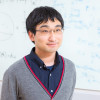
Loop structure via one sided loop extrusion with twist deformation
September 1 (Thu) at 16:00 - 17:00, 2022
Hiroshi Yokota (Postdoctoral Researcher, RIKEN Interdisciplinary Theoretical and Mathematical Sciences Program (iTHEMS))
During cell division, a chromatin fiber condenses into the rod-like shape which is so called chromosome. The chromosome is composed of consecutive loop structures. Many researchers have been interested in the loop formation mechanism. The loop extrusion is the one of the promising hypotheses. However, the only loop extrusion does not completely explain the chromosome condensation dynamics. In order to tackle this problem, we constructed a mechanical model of the loop formation dynamics by focusing on the twist and writhe structures in DNA or chromatin. In this talk, I would like to explain the loop extrusion mechanism and our model.
Venue: via Zoom
Event Official Language: English
-
Seminar
Study of the eta' meson in nuclei in the LEPS2/BGOegg experiment
August 26 (Fri) at 16:30 - 18:00, 2022
Natsuki Tomida (Specially Appointed Assistant Professor, Center for Science Adventure and Collaborative Research Advancement (SACRA), Graduate School of Science, Kyoto University)
A large mass reduction of eta'(958) meson in nuclear medium owing to its UA(1) anomaly is expected in several model calculations. We carried out the LEPS2/BGOegg experiment at SPring-8 to study eta' meson properties in nuclei. If there is a large mass reduction in nuclei, an eta' meson and a nucleus may form a bound state. We searched for the eta'-nucleus bound states via missing mass spectroscopy of the 12C(gamma, p) reaction. To suppress background events from multi-meson production, we simultaneously measured decay products from the eta'-nucleus system for the first time. We also carried out the missing mass spectroscopy simultaneously detecting an eta' meson escaping from a nucleus for the first time. We will show the experimental results and comparisons with theoretical calculations. We will also show the preliminary results of the line shape analysis of the invariant mass spectra of the eta'->2gamma decay in the gamma+12C->eta'+X reaction.
Venue: Common Room #246-248 (Main Venue) / via Zoom
Event Official Language: English
-
Seminar
Testing Astrophysical Models from the Shadow of the Galactic Center Black Hole
August 26 (Fri) at 14:00 - 15:00, 2022
Yosuke Mizuno (T.D. Lee Fellow / Associate Professor, Tsung-Dao Lee Institute, Shanghai Jiao Tong University, China)
We present the first Event Horizon Telescope (EHT) observations of Sagittarius A* (Sgr A*), the Galactic center source associated with a supermassive black hole. These observations were conducted in 2017 using a global interferometric array of eight telescopes operating at a wavelength 1.3 mm. A variety of imaging and modeling analyses all support an image that is dominated by a bright, thick ring with a diameter of ~50 micro-arcsecond. Using a large suite of numerical simulations, we demonstrate that the EHT images of Sgr A* are consistent with the expected appearance of a Kerr black hole with mass ∼4 million solar mass, which is inferred to exist at this location based on previous infrared observations of individual stellar orbits, as well as maser proper-motion studies. Our model comparisons disfavor scenarios where the black hole is viewed at high inclination (i > 50 deg), as well as non-spinning black holes and those with retrograde accretion disks. Our results provide direct evidence for the presence of a supermassive black hole at the center of the Milky Way. In this talk, I will focus on more theoretical interpretation and model comparison to understand the accretion flow properties nearby Sgr A*.
Venue: via Zoom
Event Official Language: English
-
Seminar
A rooted phylogeny of bacteria resolves early evolution
August 25 (Thu) at 16:00 - 17:00, 2022
Adrian Davin (JSPS Research Fellow, Department of Biological Sciences, Graduate School of Science, The University of Tokyo)
Bacteria are the most diverse life forms on Earth and yet, we know surprisingly little about their early evolution. In this talk, I will explain how phylogenetic reconciliations and models of genome evolution can be used to answer some of the most interesting open questions in biology, such as the nature of the last bacterial common ancestor or whether a tree is a meaningful representation of evolution in the presence of abundant lateral gene transfer.
Venue: via Zoom
Event Official Language: English
-
Workshop
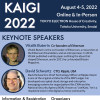
International Workshop on Blockchain Technology: Blockchain Kaigi 2022 (BCK22)
August 4 (Thu) - 5 (Fri), 2022
The International workshop Blockchain Kaigi (Kaigi : Meeting, Conference) aims at bringing together researchers and practitioners from various communities of science and technology working on areas related to FinTech, crypto-asset, and blockchain. On February 17-18, 2021, the international workshop “Blockchain in Kyoto 2021 (BCK21)” was successfully held at Kyoto University with more than 200 participants worldwide. As the second edition of the conference, the international workshop BCK22: Blockchain Kaigi 2022 will be held in Tohoku University, Sendai on August 4-5, 2022. We are looking forward to your registration for general lectures. There is no fee to attend. Authors are encouraged to submit theoretical and/or applied articles on their research related to Blockchains in general. For more information, please visit the official website at the related links below.
Venue: TOKYO ELECTRON House of Creativity, Katahira Campus, Tohoku University / via Zoom
-
Seminar
How does subatomic matter organize itself? A low-energy nuclear physics perspective
August 3 (Wed) at 16:30 - 18:00, 2022
Xavier Roca-Maza (Associate Professor, Department of Physics, University of Milan, Italy / Sezione di Milano, INFN, Italy)
This seminar is a part of the RCNP workshop (RCNP研究会「低エネルギー核物理と高エネルギー天文学で読み解く中性子星」). Those who want to attend this seminar are required to register for the workshop by July 31. This seminar is supported by Gravitational Wave and Equation of State Working Group (GW-EOS WG), RIKEN iTHEMS.
Venue: Research Center for Nuclear Physics (RCNP), Osaka University (Main Venue) / via Zoom
Event Official Language: English
151 events in 2022
Events
Categories
series
- iTHEMS Colloquium
- MACS Colloquium
- iTHEMS Seminar
- iTHEMS Math Seminar
- DMWG Seminar
- iTHEMS Biology Seminar
- iTHEMS Theoretical Physics Seminar
- Information Theory SG Seminar
- Quantum Matter Seminar
- ABBL-iTHEMS Joint Astro Seminar
- Math-Phys Seminar
- Quantum Gravity Gatherings
- RIKEN Quantum Seminar
- Quantum Computation SG Seminar
- Asymptotics in Astrophysics SG Seminar
- GW-EOS WG Seminar
- DEEP-IN Seminar
- NEW WG Seminar
- Lab-Theory Standing Talks
- QFT-core Seminar
- STAMP Seminar
- QuCoIn Seminar
- Number Theory Seminar
- Academic-Industrial Innovation Lecture
- Berkeley-iTHEMS Seminar
- iTHEMS-RNC Meson Science Lab. Joint Seminar
- RIKEN Quantum Lecture
- Theory of Operator Algebras
- iTHEMS Intensive Course-Evolution of Cooperation
- Introduction to Public-Key Cryptography
- Knot Theory
- iTHES Theoretical Science Colloquium
- SUURI-COOL Seminar
- iTHES Seminar
